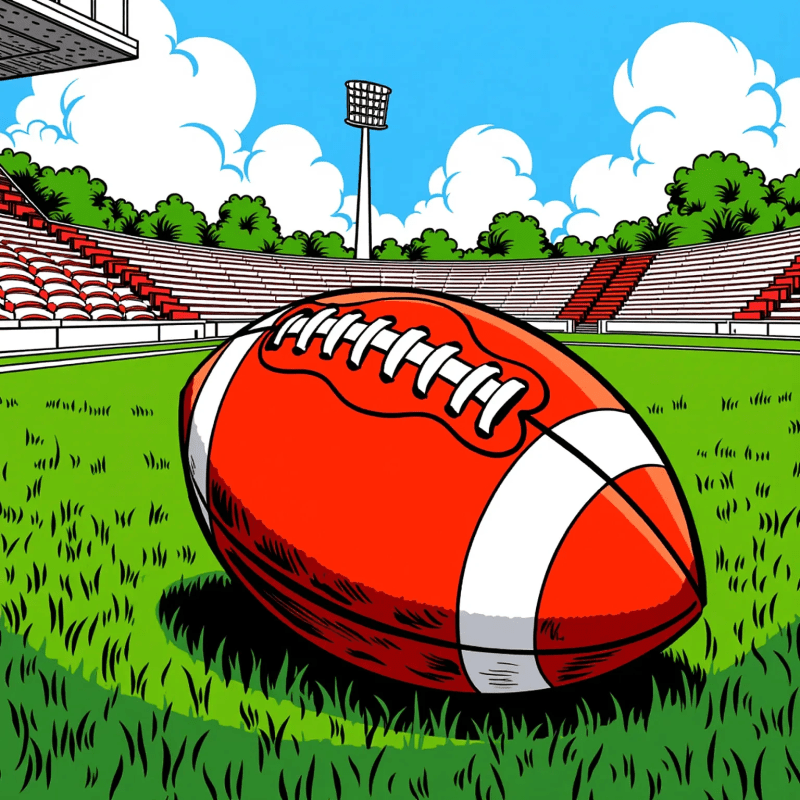When it comes to flag football, having a solid offensive formation can make all the difference. Think of your formation as a game plan that sets the tone for your plays. By mastering a few key formations, you can keep the defense guessing and create some scoring opportunities.
One popular formation is the trips formation. This setup involves three receivers lined up on one side of the field, which can stretch the defense thin. With your speedsters on one side, you can either throw a quick pass to the outside or send one of them on a deep route. This formation is tricky for defenders, as they’ll have to cover multiple options at once.
Another great option is the spread formation. This formation spaces your players out across the width of the field. This keeps the defense spread out too, creating lanes for quick passes and allowing your running back to find gaps. It’s especially useful for teams that want to take advantage of mismatches against slower defenders.
Lastly, don’t underestimate the I formation. While it may look a bit old school, it’s still highly effective in flag football. This formation allows for a strong running game while also giving your quarterback plenty of passing options. With a solid running back behind the quarterback, you can easily switch up plays based on the defense’s setup.
Remember, mastering these formations in flag football isn't just about memorizing how they look. It’s about understanding when and how to use them based on your team’s strengths and the defense you’re facing. Practice makes perfect, so get your teammates together and start experimenting!
Key Plays to Outsmart Your Opponents
When it comes to flag football, understanding the key plays can make all the difference in outsmarting your opponents. Here are some effective strategies you can implement to keep the other team guessing!
1. The Give and Go: This play is all about deception. Start with a quick handoff to a running back, who then pretends to push forward. Meanwhile, the quarterback can act like they’re looking for a pass. This can confuse defenders and create openings down the field. Timing is crucial, so make sure everyone is on the same page!
2. The Pitch to the Outside: Instead of rushing up the middle, consider making a play to the outside. Have your quarterback pitch the ball to a running back running towards the sideline. This not only takes advantage of any gaps in the defense but also stretches them out and opens up space. Speed is key, so be ready to dash!
3. The Fake Reverse: Who doesn’t love a good fake? Start by handing the ball off to one player who makes a strong fake for a reverse. As defenders bite on that move, you can send another player on a streak route or a screen pass. This can create just enough confusion to spring your receiver free for a big gain.
4. The Strategy of Spacing: Keep your players spread out on the field. This gives your quarterback multiple options and keeps defenders from being able to double-team anyone easily. When your receivers have room to maneuver, it opens up passing lanes and allows your team to exploit mismatches.
Tips for Effective Communication on Field
Effective communication on the field is crucial for any successful flag football team. It helps everyone stay on the same page and react quickly to plays as they unfold. Here are some tips to ensure your team communicates well during games.
First, establish clear signals and calls before heading onto the field. This means setting up hand signals for different plays or formations. Keeping these signals simple and consistent will make it easier for players to understand what’s happening without needing to shout everything out loud. Remember, in the heat of the moment, quick and clear communication is key!
Next, encourage open dialogue among team members. It's important that each player feels comfortable sharing thoughts or calling out adjustments. If someone spots an opportunity or a potential problem, they should feel empowered to speak up. Foster an environment where teammates support each other and openly discuss strategies.
Lastly, practice makes perfect! Incorporate communication drills into your practice sessions. This way, everyone gets used to how you talk on the field during games. Regularly running through these scenarios will build teamwork and make those game-time conversations smooth and instinctual.
Adapting Strategies for Different Game Scenarios
When you're on the field playing flag football, you might face all sorts of different scenarios. Whether you’re ahead, behind, or neck-and-neck with the other team, having a solid game plan can make all the difference. Understanding how to adapt your strategies based on the game situation is key to securing that win.
If your team is ahead, you’ll want to focus on maintaining possession of the ball. Playing a ball-control offense is the way to go. Consider short, safe passes that keep the clock running, while mixing in some running plays to eat up yards. The goal here is to run down the clock while still making smart moves that keep the other team guessing.
On the flip side, if you find yourself trailing, it’s time to kick up the intensity. You'll need to switch to a more aggressive strategy. Go for longer passes and take calculated risks to score fast. This is when your players should be ready to run some trick plays. Keeping the defense on their toes can create openings that may lead your team down the field quickly.
In a tight game, every yard counts. This is when teamwork shines. Make sure each player knows their role, whether it's a quick screen pass or a deep route. Communication is essential, so set up signals to ensure everyone is in sync. This way, you can adapt on the fly and make the most of every opportunity as it arises.

